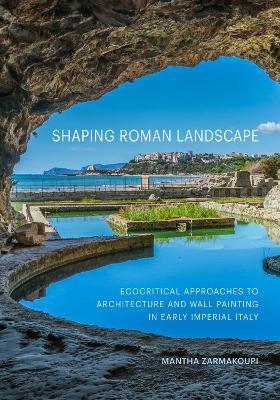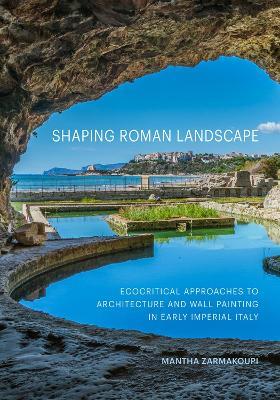L’articolo è stato aggiunto alla lista dei desideri
IBS.it, l'altro eCommerce
Shaping Roman Landscape: Ecocritical Approaches to Architecture and Decoration in Early Imperial Italy
Cliccando su “Conferma” dichiari che il contenuto da te inserito è conforme alle Condizioni Generali d’Uso del Sito ed alle Linee Guida sui Contenuti Vietati. Puoi rileggere e modificare e successivamente confermare il tuo contenuto. Tra poche ore lo troverai online (in caso contrario verifica la conformità del contenuto alle policy del Sito).
Grazie per la tua recensione!
Tra poche ore la vedrai online (in caso contrario verifica la conformità del testo alle nostre linee guida). Dopo la pubblicazione per te +4 punti



Tutti i formati ed edizioni
Promo attive (0)
"Landscape emerged as a significant theme in the Roman Late Republican and Early Imperial periods. Writers described landscape in texts and treatises, its qualities were praised and sought out in everyday life, and contemporary perceptions of the natural and built environment, as well as ideas about nature and art, were intertwined with architectural and decorative trends. This generously illustrated volume examines how representations of real and depicted landscapes, and the merging of both in visual space, contributed to the creation of novel languages of art and architecture. Drawing on a diverse body of archaeological, art historical, and literary evidence, this study applies a groundbreaking ecocritical lens that moves beyond the limits of traditional iconography. Chapters consider, for example, how garden designs and paintings appropriated the cultures and ecosystems brought under Roman control and the ways miniature landscape paintings chronicled the transformation of the Italian shoreline with colonnaded villas, pointing to the changing relationship of humans with nature. Making a timely and original contribution to current discourses on ecology and art and architectural history, Shaping Roman Landscape reveals how Roman ideas of landscape, and the decorative strategies at imperial domus and villa complexes that gave these ideas shape, were richly embedded with meanings of nature, culture, and labor. " "A fresh and original perspective on Roman landscape painting and architecture, this book integrates these artistic forms into an ecocritical approach examining Roman attitudes toward landscape and nature more broadly. It confirms my belief that art and material culture truly come alive as essential sources for understanding the ancient world when studied within the complete tapestry of ancient life experience and thought. The book's exquisite presentation, complemented by a wealth of stunning images, adds an extra layer of enjoyment to the reading experience."-Barbara E. Borg, Professor of Classical Archeology, Scuola Normale Superiore "Combining a deep understanding of ancient architecture and visual culture with ecocritical approaches to environmental design, Shaping Roman Landscape offers a fresh and timely account of the relationship between landscape, representation, and empire in Roman Italy. Through astute and beautifully illustrated analysis, Mantha Zarmakoupi carefully navigates shifting tensions between the Roman elite's sensitivity to nature and climate, on one hand, and their urge to master and aestheticize both space and people and flora and fauna, on the other."-Verity Platt, Professor of Classics and History of Art, Cornell University “This is a bold and meticulously researched attempt to understand how the ancient Romans thought about landscape. It encompasses a wide range of evidence—all beautifully illustrated: from architectural plans of urban parks or country villas to framed panel paintings of rural sanctuaries or palatial residences. And it offers a novel and persuasive picture of the interrelationship of nature and the built environment—‘a way of seeing’—that is distinctively Roman.” —Chris Hallett, U.C. Berkeley, History of Art
L'articolo è stato aggiunto al carrello
L’articolo è stato aggiunto alla lista dei desideri


